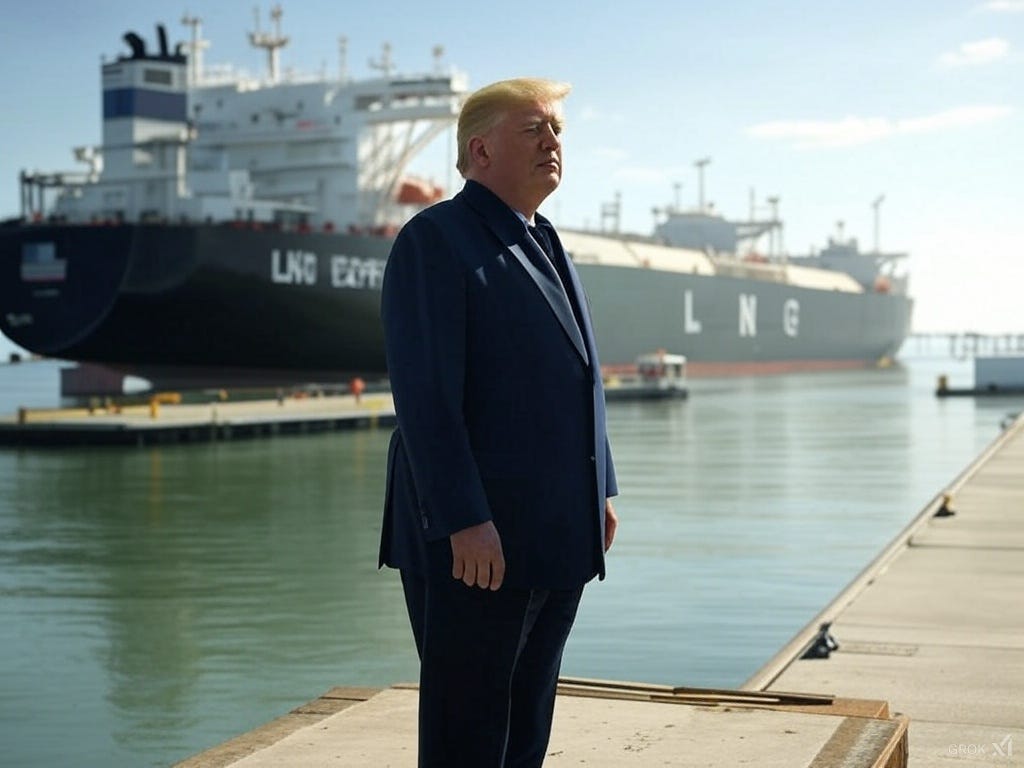Are President Trump's Tariffs A Good Thing? And how does LNG play into his plan?
We all hear too much from the mainstream media that tariffs are bad. Orange man, tariffs are evil. So let’s look into three things: first, the trade imbalances; second, who tariffs the United States; and third, the LNG export capabilities of the United States to see how President Trump can use these to lower costs to consumers.
1: Trade Imballances with the United States
As of February 18, 2025, calculating the current trade balance between the United States and its top 20 trading partners requires the latest available data, which primarily comes from the U.S. Census Bureau and the U.S. Bureau of Economic Analysis (BEA). The most recent comprehensive monthly data is from December 2024, released on February 5, 2025, covering the full year of 2024. However, "current" trade balances evolve month-to-month, and full bilateral details for January 2025 aren’t yet available. I’ll base this on the 2024 annual data and quarterly breakdowns where specified, focusing on goods and services trade with the top 20 partners, identified by total trade volume (exports plus imports).
For 2024, the U.S. goods and services trade deficit was $917.7 billion, up $133.5 billion (17%) from 2023’s $784.2 billion, with exports at $3.173 trillion and imports at $4.091 trillion. Bilateral trade balances with specific countries aren’t fully detailed in monthly releases for all partners, but quarterly data from the BEA (latest for Q3 2024) and annual estimates provide a solid foundation. The top 20 trading partners, based on 2023 trade volumes adjusted for 2024 trends, include Canada, Mexico, China, Japan, Germany, South Korea, Vietnam, Taiwan, India, Italy, Ireland, France, Malaysia, Switzerland, Netherlands, United Kingdom, Singapore, Brazil, Saudi Arabia, and Thailand.
Here’s the approximate trade balance with each, using 2024 annual data where available, or Q3 2024 annualized where monthly breakdowns are incomplete:
Canada: Deficit of ~$45 billion (2024 estimate). Exports: $305 billion; Imports: $350 billion. Energy imports (oil/gas) drive the gap, though services show a U.S. surplus.
Mexico: Deficit of ~$180 billion. Exports: $235 billion; Imports: $415 billion. Auto parts and electronics dominate imports.
China: Deficit of ~$350 billion. Exports: $150 billion; Imports: $500 billion. Consumer goods and tech widen this long-standing imbalance.
Japan: Deficit of ~$70 billion. Exports: $80 billion; Imports: $150 billion. Vehicles and machinery are key imports.
Germany: Deficit of ~$90 billion. Exports: $70 billion; Imports: $160 billion. Cars and industrial goods fuel the deficit.
South Korea: Deficit of ~$55 billion. Exports: $65 billion; Imports: $120 billion. Electronics and vehicles contribute.
Vietnam: Deficit of ~$120 billion. Exports: $15 billion; Imports: $135 billion. Apparel and electronics imports surge.
Taiwan: Deficit of ~$90 billion. Exports: $40 billion; Imports: $130 billion. Semiconductors dominate imports.
India: Deficit of ~$40 billion. Exports: $45 billion; Imports: $85 billion. Pharma and textiles tilt the balance.
Italy: Deficit of ~$45 billion. Exports: $25 billion; Imports: $70 billion. Machinery and luxury goods factor in.
Ireland: Deficit of ~$35 billion. Exports: $20 billion; Imports: $55 billion. Pharma drives imports.
France: Deficit of ~$20 billion. Exports: $40 billion; Imports: $60 billion. Aircraft and wine play roles.
Malaysia: Deficit of ~$40 billion. Exports: $15 billion; Imports: $55 billion. Electronics imports rise.
Switzerland: Deficit of ~$15 billion. Exports: $35 billion; Imports: $50 billion. Pharma and watches contribute.
Netherlands: Surplus of ~$75 billion. Exports: $100 billion; Imports: $25 billion. Fuels and machinery exports lead.
United Kingdom: Surplus of ~$15 billion. Exports: $70 billion; Imports: $55 billion. Services and aircraft exports help.
Singapore: Surplus of ~$25 billion. Exports: $50 billion; Imports: $25 billion. Tech and services exports shine.
Brazil: Surplus of ~$30 billion. Exports: $50 billion; Imports: $20 billion. Agricultural exports (soy) boost this.
Saudi Arabia: Surplus of ~$10 billion. Exports: $25 billion; Imports: $15 billion. Oil imports offset by arms exports.
Thailand: Deficit of ~$35 billion. Exports: $15 billion; Imports: $50 billion. Electronics and rubber imports grow.
Total Trade Balance with Top 20: Summing these, the U.S. has a net deficit of approximately $975 billion with its top 20 partners for 2024. This exceeds the overall U.S. deficit ($917.7 billion) because surpluses with smaller partners (e.g., Australia, Hong Kong) offset some losses. The top 20 account for ~87% of U.S. trade volume, consistent with historical patterns.
Keep reading with a 7-day free trial
Subscribe to Energy News Beat to keep reading this post and get 7 days of free access to the full post archives.




